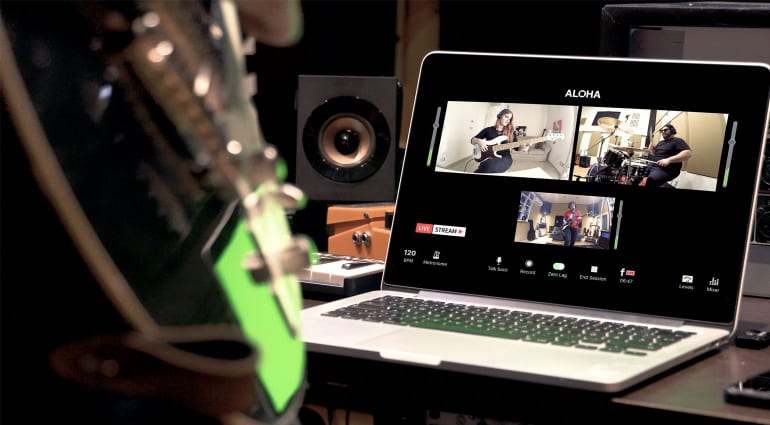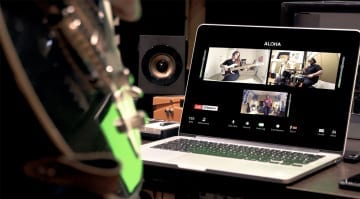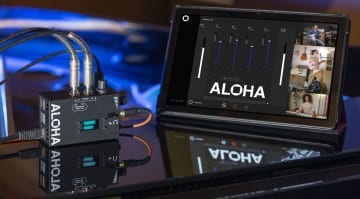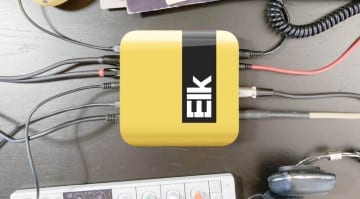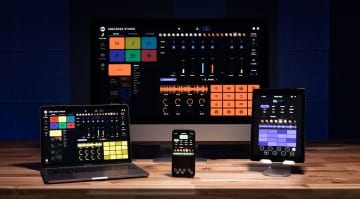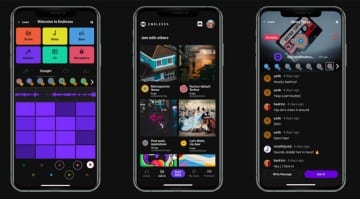Elk introduces low latency online jamming breakthrough with Aloha
Elk, the creators of the Elk audio OS has created a new service called Aloha which hopes to enable real-time remote music creation and performance across the Internet and 5G networks.
Online Jamming
The ability to jam in real-time with people over the internet is something we desperately want to do but it’s been out of reach. The latency is too high making it impossible for more than one person to play along to something and have it come together in sync in real life. We see all those Zoom-style videos of people singing together or playing together and they give the impression that it’s all happening in real-time when in fact each person is singing/playing along to a guide track and the performance is stitched together afterwards – sorry to burst the bubble. Microsoft almost fooled us into believing they had cracked the problem with their impressive Re:Surface event a few weeks back until it emerged that the singing was live but the rest of the band was pre-recorded because real-time jamming over the internet is really hard!
So what’s this all about then?
Elk and Aloha
Elk is an interesting company that’s produced a super-fast Audio OS that can be embedded in devices and run things like VST plug-ins and instruments. It has an enormous amount of potential in bringing software instruments and effects into interesting bits of hardware like stompboxes, desktop synths or integrated into real instruments. I feel they’ve not quite yet found the ideal destination for Audio OS but it seems like a breakthrough is right around the corner.
Today Elk is introducing us to Aloha which is a platform running Audio OS that aims to pipe audio over the internet with minimal latency to enable musicians to play together online for real and in sync. That’s one tall order. My experience of Elk is that they are very good at talking up concepts and potential but are not very good at explaining the reality of how it all works. So the press release is all about “seismic shifts” and lines like “we aim to connect every musician and musical instrument by digitizing the live interaction…in sync from any location” and there’s a lot of talk about 5G being the key and will “unleash full portability using the power of edge computing to provide entirely new audio experiences across entertainment including gaming, augmented and virtual reality”. All of it is very very cool but little of it explains very much.
Ok then, but what does it all mean? Well, maybe the promo video will tell us something?
You are currently viewing a placeholder content from YouTube. To access the actual content, click the button below. Please note that doing so will share data with third-party providers.
Not really no. It looks awesome and everything but how do you actually do what they are doing in the video if it can be done at all and is not just another one of these pretend live jam videos?
From what I can drag out of them Aloha consists of an App and a little pocket-sized hardware device. The hardware device plugs directly into your network router – Wi-Fi is not going to cut it, it has to be a direct landline connection. To get your audio into the box you have a stereo input and output plus an ADAT port for multi-channel. The round-trip latency of Audio OS is only 1ms and so you are giving your audio, your guitar playing, singing, synthesizer or whatever the fastest route to the internet and to your fellow performers. You could look at it as an audio interface for direct connection to online collaboration. The device is then controlled via an App on your computer or phone which gives you an instant “Live Stream” button and the ability to record the whole performance as audio and video.
I wasn’t able to get a photo of the device so it remains a little bit mysterious. The stereo in/out and ADAT seems sensible to a degree but to really make this accessible I would have thought that a headphone output, mic and hi-z inputs would make it an instant jamming box rather than something you’d have to wire up to a larger system. Then as it’s running Audio OS couldn’t it give you access to VST plugins for your voice and guitar? Then perhaps could you run VST instruments on the box and play those directly with a MIDI keyboard rather than having to add latency by coming out of your computer? It opens up a load of possibilities where I could see every audio interface from every manufacturer having an ethernet port and running Audio OS inside as standard to enable online collaboration – that would be very cool!
Latency though?
The videos they’ve released of performances are very impressive and is absolutely what we’ve been waiting for. How it actually feels is a bit uncertain at the moment. I’m both encouraged and slightly worried by comments from Elk Audio founder and CEO Michele Benincaso who says:
“Aloha is designed to reduce those delays while also smoothing out shifting levels of latency that can make it even more difficult to play together…. What is very important is not only the latency itself, but the consistency of the latency. That’s a very, very important point because the musician can adapt, but what they cannot do, they cannot adapt if the latency is not stable.”
So, on the one hand, it’s awesome that Aloha is saving every millisecond and on the other the talk of stable latency makes you think that we’re expected to put up with latency to a degree. But who knows?
Let’s jam
I find this whole thing completely fascinating. It’s like online jamming is something tantalizingly out of reach that seems so obvious and yet so difficult to achieve. If Elk has really pulled this off then it could be completely revolutionary and potentially give musicians and music lovers the opportunity to enjoy a properly live experience in our locked-down, socially distanced lives.
You can sign up to be part of the beta testing on the website if you fancy having a go.
More information
Video
You are currently viewing a placeholder content from YouTube. To access the actual content, click the button below. Please note that doing so will share data with third-party providers.

 1,0 / 5,0 |
1,0 / 5,0 | 